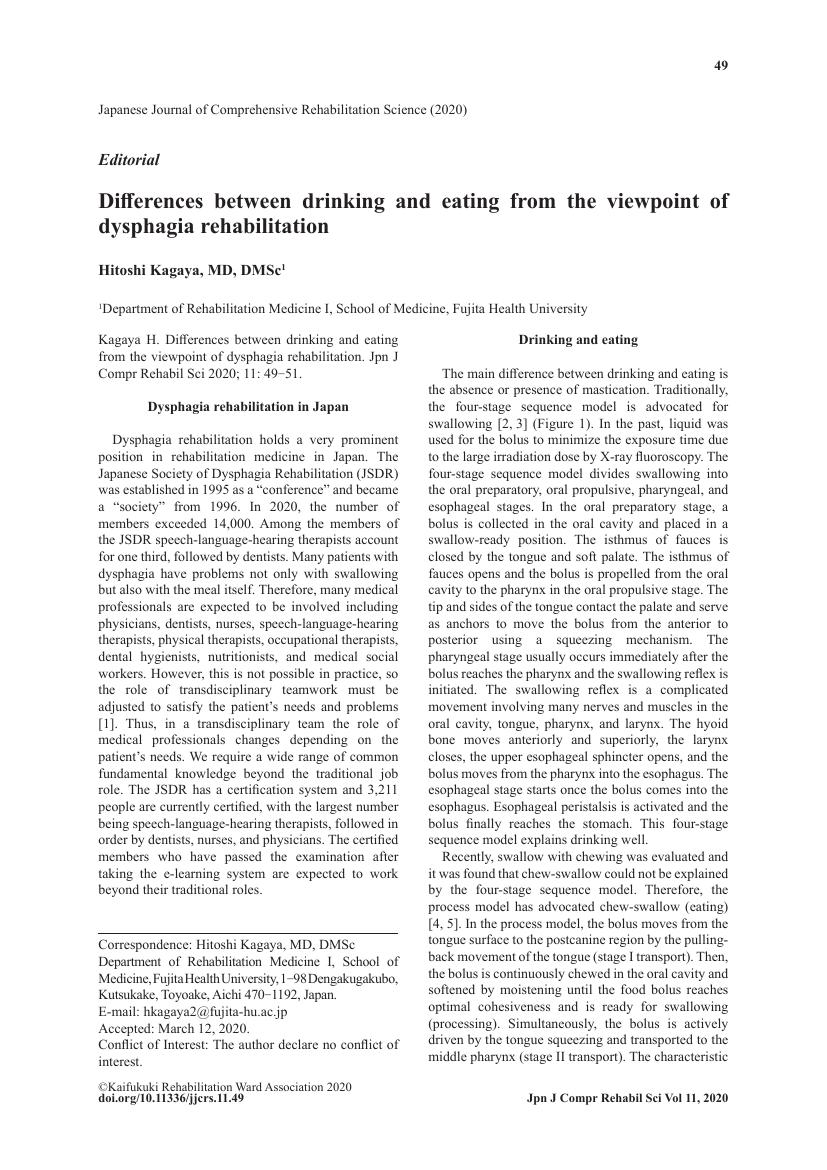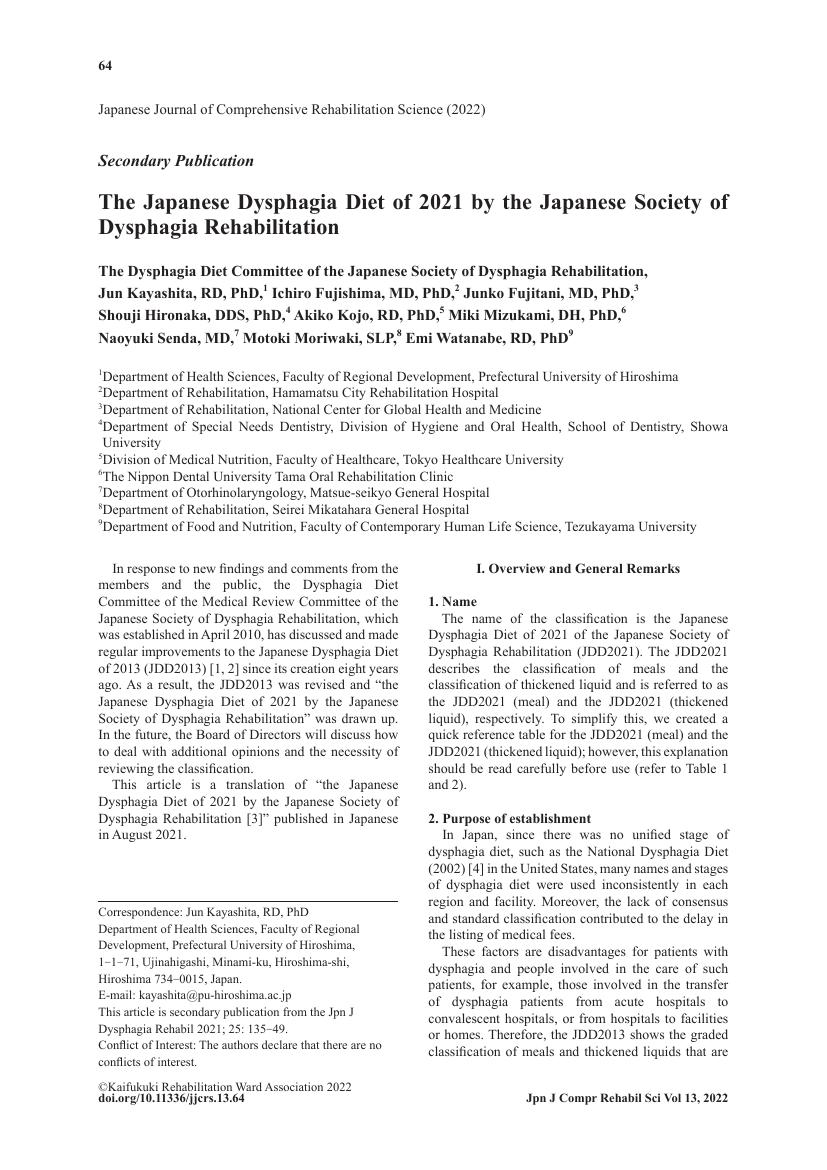- 著者
- Minoru Murayama
- 出版者
- Kaifukuki Rehabilitation Ward Association
- 雑誌
- Japanese Journal of Comprehensive Rehabilitation Science (ISSN:21855323)
- 巻号頁・発行日
- vol.12, pp.32-37, 2021 (Released:2021-09-03)
- 参考文献数
- 7
- 被引用文献数
- 1
Murayama M. Effectiveness of a knee-ankle-foot orthosis with a knee extension aid in gait training for stroke patients. Jpn J Compr Rehabil Sci 2021; 12: 32-37.Objective: To evaluate the effectiveness of a kneeankle- foot orthosis (KAFO) with a newly developed knee extension aid in gait training for stroke patients with severe leg paralysis.Methods: The participants were 7 recovering stroke patients prescribed a KAFO. With the KAFO knee joint set to allow free flexion, knee flexion angle, lower limb muscle activity, and time of plantar ground contact were measured during assisted walking with the knee extension aid or a conventional support loop.Results: When first using the knee extension aid, knee flexion angle at initial ground contact was significantly decreased and time from heel strike on the paralyzed side to forefoot strike was prolonged compared with the support loop. After using the knee extension aid for 1 week, in addition to the two parameters above, maximum knee flexion angle during the swing phase, knee extension displacement from the maximum flexion angle to initial ground contact, and the muscle activity ratio of the biceps femoris during the swing phase were significantly increased compared with the support loop.Conclusion: This knee extension aid may be indicated for patients who have difficulty in initial heel strike due to excessive knee flexion at the end of the swing phase.
- 著者
- Hitoshi Kagaya
- 出版者
- Kaifukuki Rehabilitation Ward Association
- 雑誌
- Japanese Journal of Comprehensive Rehabilitation Science (ISSN:21855323)
- 巻号頁・発行日
- vol.11, pp.49-51, 2020 (Released:2020-06-13)
- 参考文献数
- 12
- 被引用文献数
- 2 3
- 著者
- Jun Kayashita Ichiro Fujishima Junko Fujitani Shouji Hironaka Akiko Kojo Miki Mizukami Naoyuki Senda Motoki Moriwaki Emi Watanabe
- 出版者
- Kaifukuki Rehabilitation Ward Association
- 雑誌
- Japanese Journal of Comprehensive Rehabilitation Science (ISSN:21855323)
- 巻号頁・発行日
- vol.13, pp.64-77, 2022 (Released:2023-02-28)
- 参考文献数
- 16
- 被引用文献数
- 13
- 著者
- Takashi Hiraoka
- 出版者
- Kaifukuki Rehabilitation Ward Association
- 雑誌
- Japanese Journal of Comprehensive Rehabilitation Science (ISSN:21855323)
- 巻号頁・発行日
- vol.12, pp.1-3, 2021 (Released:2021-05-07)
- 参考文献数
- 7
- 被引用文献数
- 1 5
- 著者
- Fumihiro Matsuda Masahiko Mukaino Kei Ohtsuka Hiroki Tanikawa Kazuhiro Tsuchiyama Toshio Teranishi Yoshikiyo Kanada Hitoshi Kagaya Eiichi Saitoh
- 出版者
- Kaifukuki Rehabilitation Ward Association
- 雑誌
- Japanese Journal of Comprehensive Rehabilitation Science (ISSN:21855323)
- 巻号頁・発行日
- vol.7, pp.111-118, 2016 (Released:2016-12-30)
- 参考文献数
- 20
- 被引用文献数
- 19
Matsuda F, Mukaino M, Ohtsuka K, Tanikawa H, Tsuchiyama K, Teranishi T, Kanada Y, Kagaya H, Saitoh E. Analysis of strategies used by hemiplegic stroke patients to achieve toe clearance. Jpn J Compr Rehabil Sci 2016; 7: 111-118.Objective: The purpose of this study was to analyze the extent to which lower limb shortening and compensatory movements contribute to toe clearance during swing, and to identify the different strategies employed by healthy individuals and hemiplegic stroke patients to achieve toe clearance.Methods: The subjects comprised 18 hemiplegic stroke patients and 18 healthy individuals matched for age, gender, and walking speed. We calculated toe clearance and its components for comparison between the two groups. We also calculated the correlations between the components.Results: The foot-to-floor distance during mid-swing was smaller in hemiplegic stroke patients than in healthy individuals. Regarding the components, shortening of hip-toe length (SHTL) was smaller in stroke patients, whereas upward movement of the hip due to pelvic obliquity, upward movement of the foot due to abduction, and upward movement of the contralateral hip were all greater. Among hemiplegic stroke patients, there were significant negative correlations between SHTL and the other components.Conclusions: Hemiplegic stroke patients achieved smaller upward movement by lower limb shortening compared with healthy individuals. The contribution of hip hiking and other compensatory movements that correlated to SHTL appeared to be important in achieving toe clearance.


